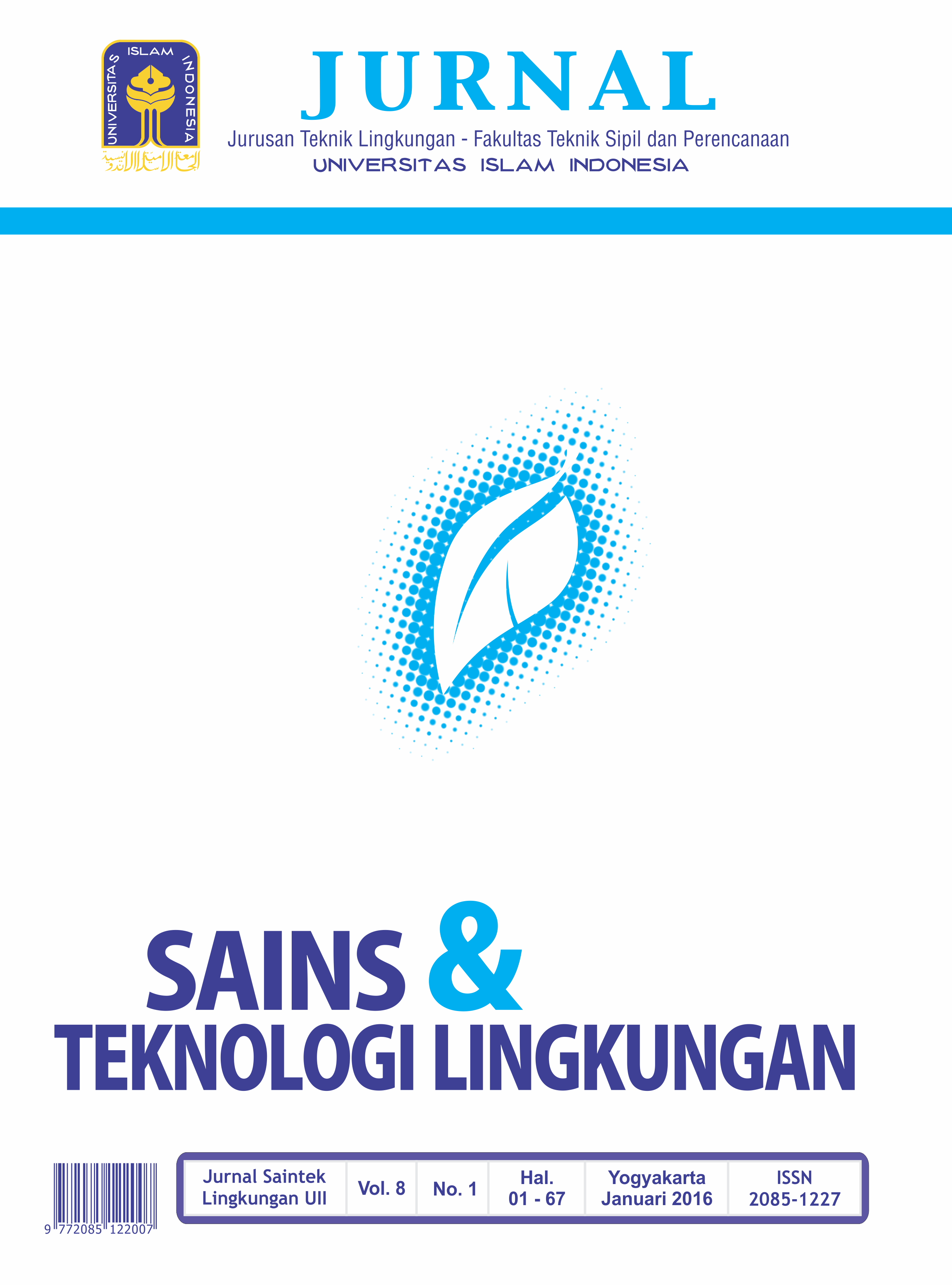Main Article Content
Abstract
Sampah plastik yang dulunya merupakan masalah lingkungan, saat ini dapat diubah menjadi bahan bakar alternatif dengan menggunakan proses daur ulang yang memanfaatkan energi panas yaitu pirolisis. Analisis yang digunakan dalam penelitian ini adalah analisis terhadap minyak (liquid) yang dihasilkan dari pirolisis sampah plastik Polistitren (PS), plastik berlapisan aluminium foil (kemasan/ multilayer) (AL) dan campuran plastik tersebut. Penelitian ini dilakukan untuk mendapatkan kuantitas produk dan senyawa kimia yang dihasilkan dari pirolisis sampah plastic PS, kemasan dan campuran keduanya. Penelitian dilakukan dengan menempatkan 50 gram PS (PS), 50 gram plastik berlapisan aluminium foil (AL) (multi layer),dan PS dengan campuran 10%, 20%, 30%, 40% AL didalam reaktor pirolisis yang terbuat dari stainless steel berbentuk silinder dengan volume 0,96 m3 dengan temperatur akhir 450oC. hasil penelitian menunjukkan bahwa semakin banyak penambahan Plastik berlapisan aluminium foil maka semakin cepat naiknya temperatur mencapai titik optimum yang ditetapkan (450oC). Sedangkan senyawa kimia yang dihasilkan pada pirolisis yang mengandung PS sebagian besar berupa senyawa aromatic, sedangkan pada pirolisis AL sebagian besar berupa senyawa olefin.
Keywords
pirolisis
polistiren
plastik multilayer
senyawa kimia
Article Details
License
Authors who publish with this journal agree to the following terms:
- Authors retain copyright and grant the journal right of first publication with the work simultaneously licensed under a Creative Commons Attribution License that allows others to share the work with an acknowledgement of the work's authorship and initial publication in this journal.
- Authors are able to enter into separate, additional contractual arrangements for the non-exclusive distribution of the journal's published version of the work (e.g., post it to an institutional repository or publish it in a book), with an acknowledgement of its initial publication in this journal.
- Authors are permitted and encouraged to post their work online (e.g., in institutional repositories or on their website) prior to and during the submission process, as it can lead to productive exchanges, as well as earlier and greater citation of published work (See The Effect of Open Access).
